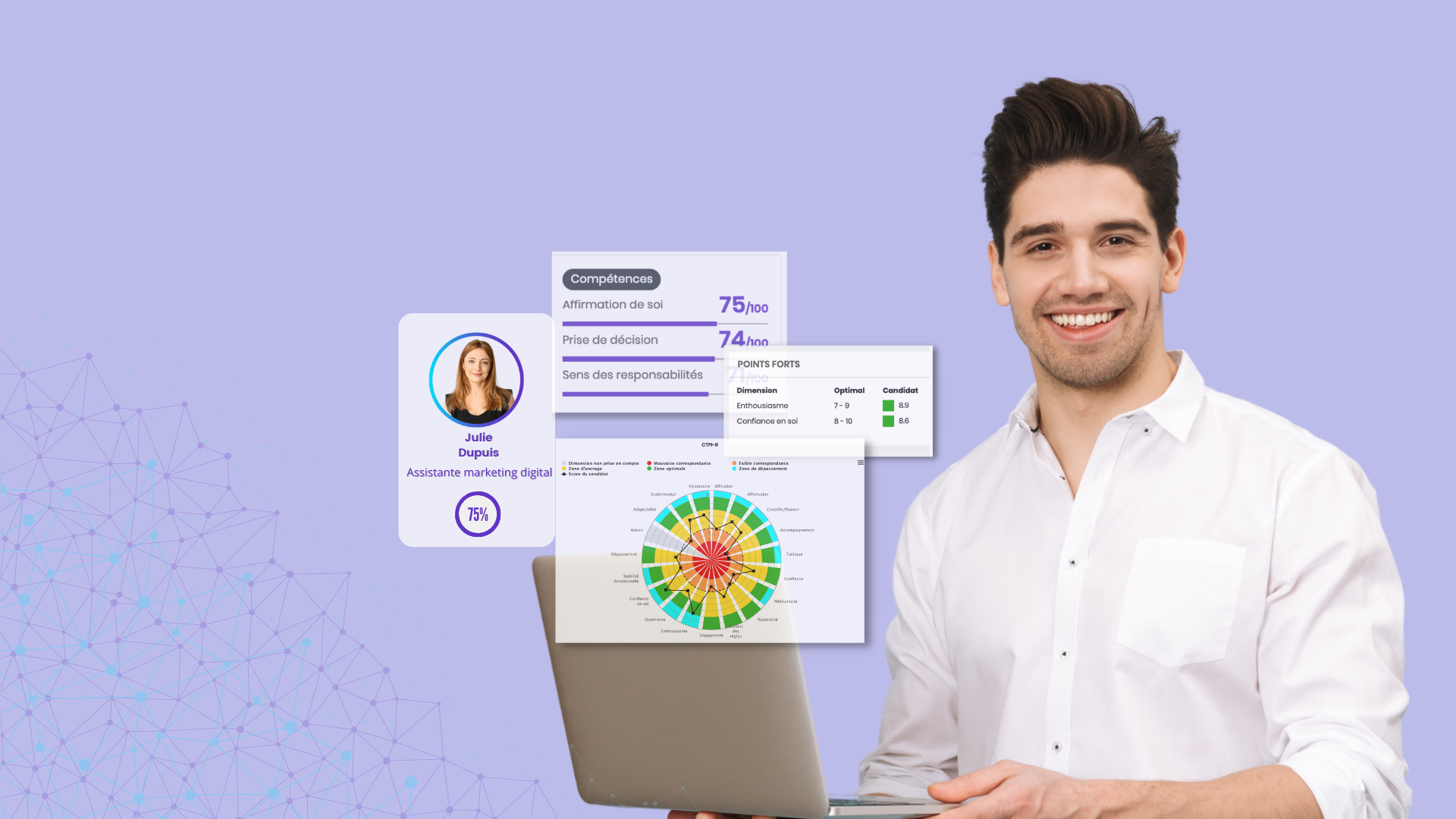
We cannot emphasise this enough: on average, 1 out of 2 recruitments is a failure, i.e. the recruited candidate does not stay more than 18 months in a given role. The main reason for this is problems related to behaviours, soft skills and motivations.
But that's not all: even successful recruitment is not enough. It is likewise necessary to retain employees, develop their talents and offer them the opportunity to evolve to another position. Skills are perishable and must be updated and nurtured.
The common denominator of all this is potential. If potential is not taken into account at the forefront, we will be doomed to repeated recruitment failures, high turnover, disengagement of employees and ultimately, colossal hidden costs, often devastating for a company.
At Central Test, we have developed a predictive model that enables optimal prediction of individual potential by combining the science of psychometrics and artificial intelligence.
By developing a highly reliable Predictive Model, Central Test opens the door to the future and pursues its mission of creating a powerful human assessment system.
What is a predictive model?
Predictive modelling is a process used in predictive analysis to create hypotheses and predictions about future outcomes using data.
In the business world, predictive analysis enables in building predictive patterns and models to anticipate trends and behaviours.
A predictive model can be used to predict a candidate's behaviour for example, and their suitability for a job role as well as their areas of challenge.
Central Test's predictive model
Central Test's predictive model is based on a system of algorithms that centralise multiple assessment sources.
This model makes it possible to identify the individuals who are closest to the success criteria, those who have the most similarities with the role, while highlighting their areas of progress.
In the past, assessments were factual; they focussed on measuring the traits on which a person's job role was compared to an ideal. This traditional method was relevant to see the immediate suitability of an individual for a job role. However, as it was exclusively based on the measurement of traits, which by nature are quite stable, this method was static and did not enable us to foresee an individual’s development.
With the Predictive Model, the assessments have taken a dynamic turn; it is no longer fixed traits that serve as the basis of analysis, but skills, which have the advantage of evolving. And to go even further, the model takes into account the relative importance of each skill for a given role.
Thus, thanks to the multi-criteria and multi-level assessment of skills, it is now possible to weigh the mastery of a skill by an individual with unparalleled precision to estimate its potential for progress, and to know concretely where to intervene to develop it.
The Predictive Model, therefore, opens up a range of possibilities. This new assessment system introduces a resilient vision of the individual through the dynamism of the elements measured and the potential for development.
How to assess potential using a model model ?
When it comes to assessing potential, no method, however scientific, can claim to predict success beyond a certain threshold of predictivity. For example, a 100% match for a skill via an assessment must be put into perspective in terms of the predictive accuracy of the assessment for that given skill.
This means that, compared to intuition alone, the evaluator will have a 50% higher chance of not being wrong. The same applies to any other method, including feedback methods, which are subject to many biases.
In order to make more accurate predictions, the model makes a multi-criteria assessment of competence by analysing all the factors that make it up, i.e. an individual's mode of functioning, interests and motivations, professional skills, soft skills and cognitive abilities.
Therefore, the combination of methods will lead to a more reliable prediction, as long as the methods are relevant to the success criteria. In Central Test's predictive model, we cross-reference the assessment methods in a homogeneous way, taking into account their relative relevance to each target criterion, which leads to a better level of predictivity and is refined over time as the assessment process progresses.
The predictive model of Central Test brings many benefits, especially in an unstable context where jobs are constantly changing.
To learn more about the predictive model and its benefits in recruitment and talent development, we invite you to attend our digital event INNOVATION WEEKS from 20-30 June 2022.





